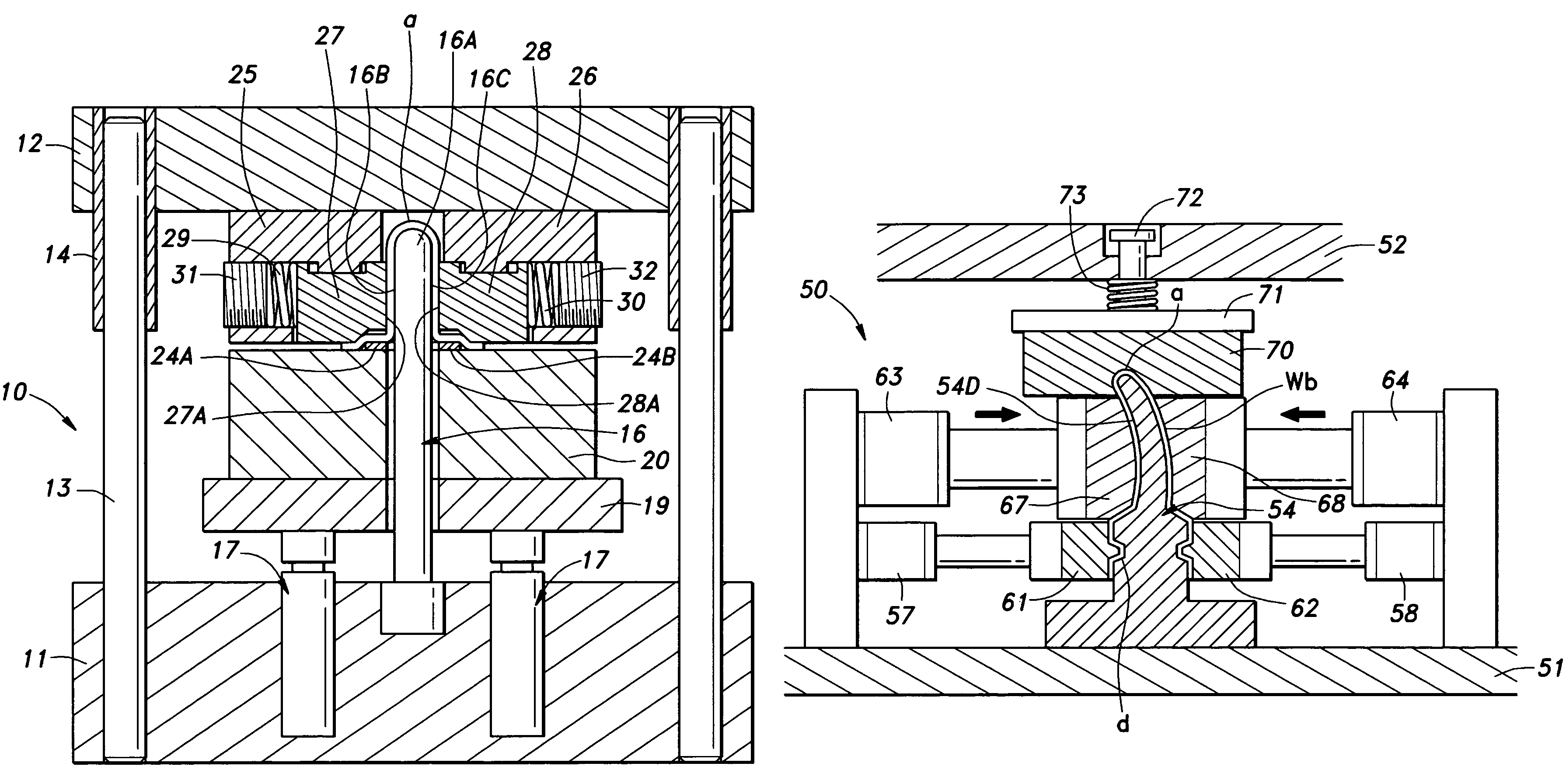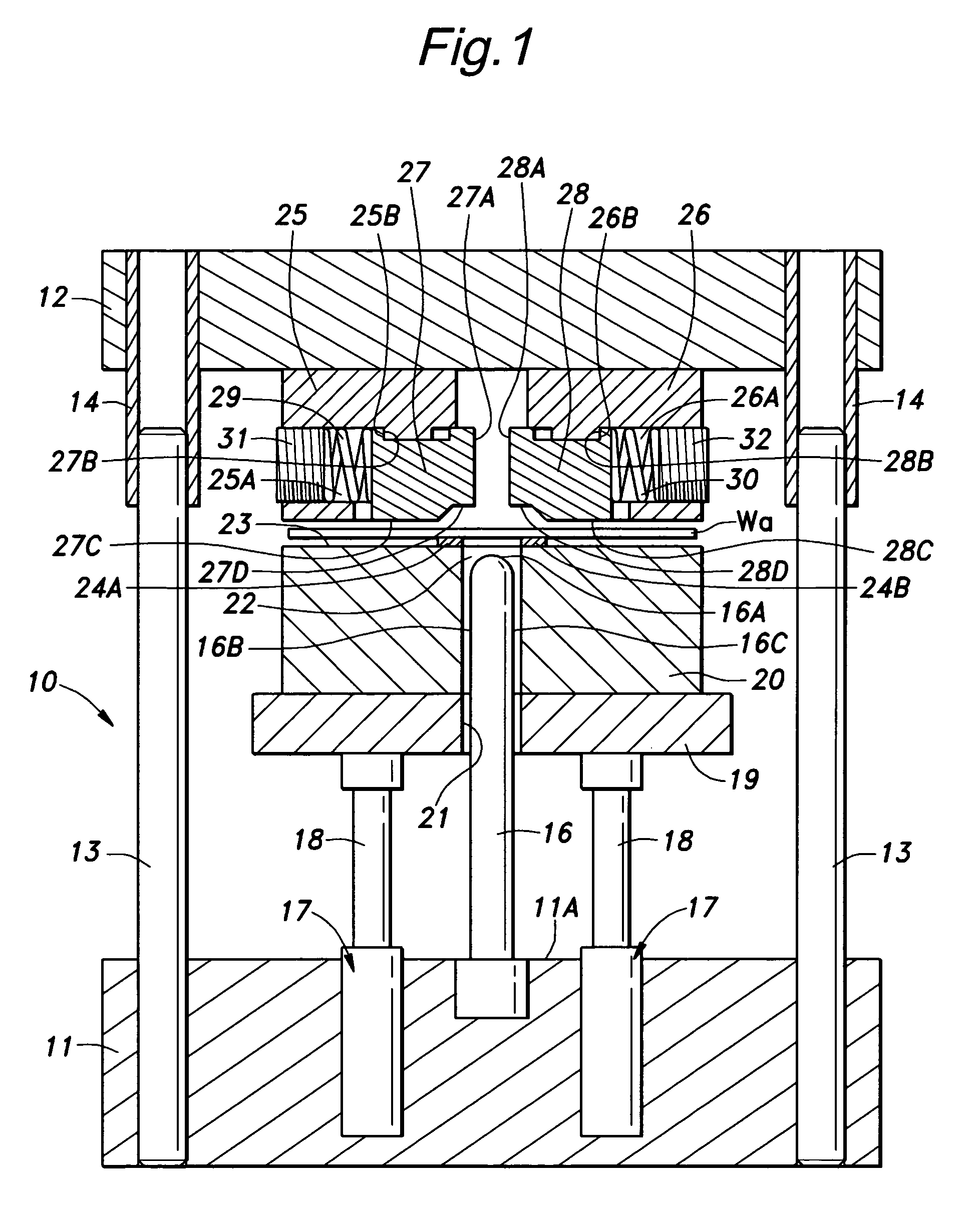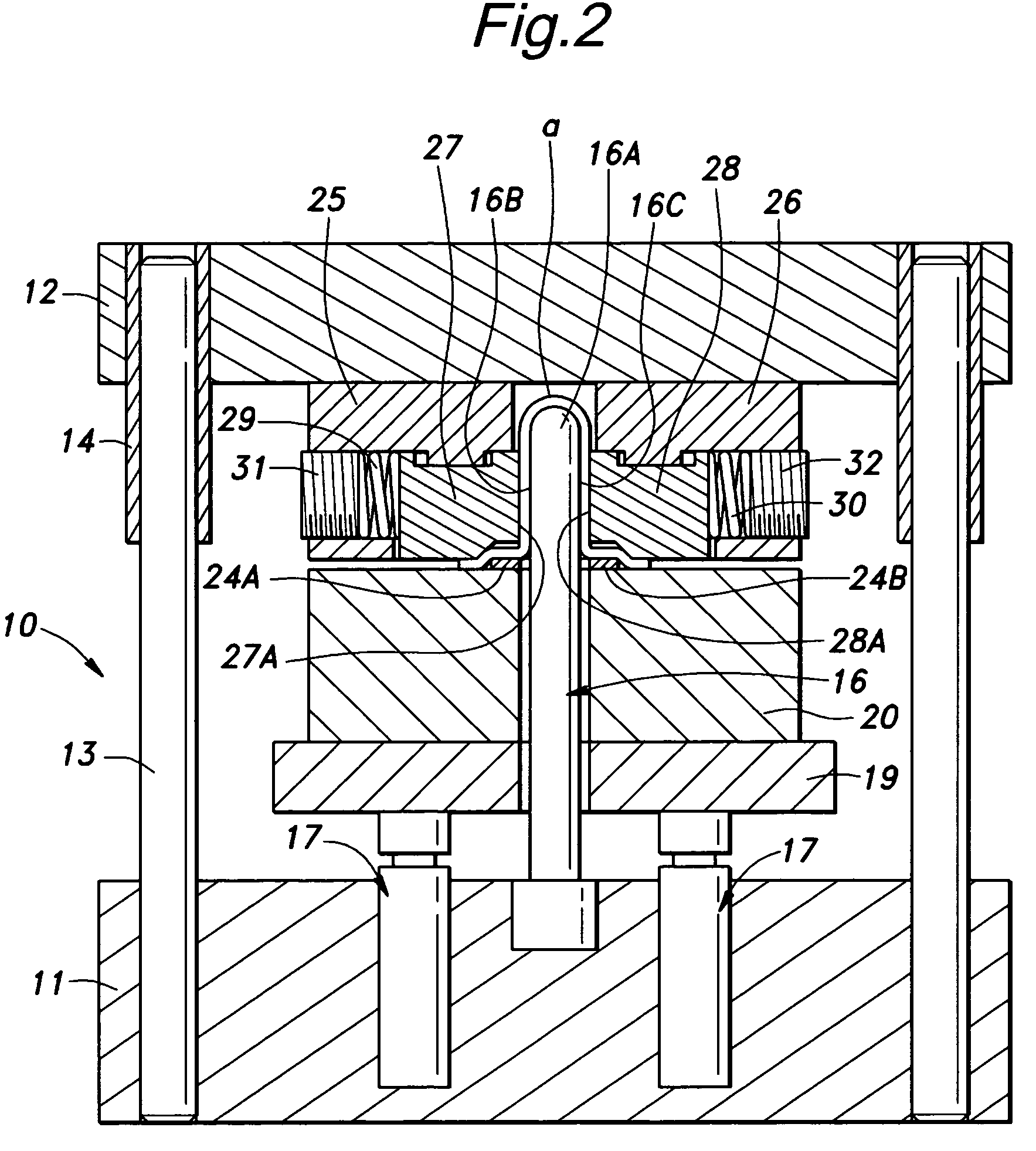Method for manufacturing an edge protector and die assemblies therefor
a technology of die assembly and edge protector, which is applied in the direction of engine components, mechanical equipment, metal-working equipment, etc., can solve the problems of insufficient fabrication of edge protectors having three dimensional configurations, damage to blades, and prone to chipping or cracking
- Summary
- Abstract
- Description
- Claims
- Application Information
AI Technical Summary
Benefits of technology
Problems solved by technology
Method used
Image
Examples
Embodiment Construction
[0024]A method for manufacturing an edge protector and die assemblies for performing such a method embodying the present invention are described in the following with reference to FIGS. 1 to 6. As illustrated in FIG. 7, the edge protector 100 that is desired to be manufactured is made of a stainless steel sheet having a thickness t of about 0.1 mm, a total length L of about 30 to 300 mm, and a width W of about 5 to 30 mm, and is given with a U-shaped cross section that includes a bent portion a and a pair of planar portions b and c. The bent portion a is given with a three dimensional inner contour that closely fits the outer contour of the leading edge of a blade (aerofoil) which is desired to protected, and the planar portions b and c are also slightly curved so as to conform to the corresponding lateral sides of the blade.
[0025]The method of manufacturing the edge protector 100 is now described in the following. Referring to FIGS. 1 and 2, a piece of blank sheet metal Wa made of ...
PUM
| Property | Measurement | Unit |
|---|---|---|
| width | aaaaa | aaaaa |
| width | aaaaa | aaaaa |
| total length | aaaaa | aaaaa |
Abstract
Description
Claims
Application Information
 Login to View More
Login to View More - R&D
- Intellectual Property
- Life Sciences
- Materials
- Tech Scout
- Unparalleled Data Quality
- Higher Quality Content
- 60% Fewer Hallucinations
Browse by: Latest US Patents, China's latest patents, Technical Efficacy Thesaurus, Application Domain, Technology Topic, Popular Technical Reports.
© 2025 PatSnap. All rights reserved.Legal|Privacy policy|Modern Slavery Act Transparency Statement|Sitemap|About US| Contact US: help@patsnap.com



